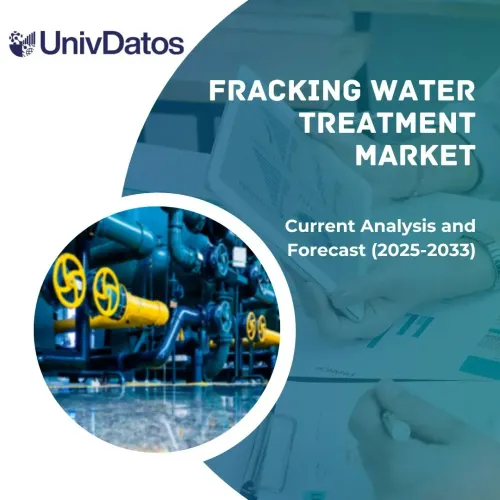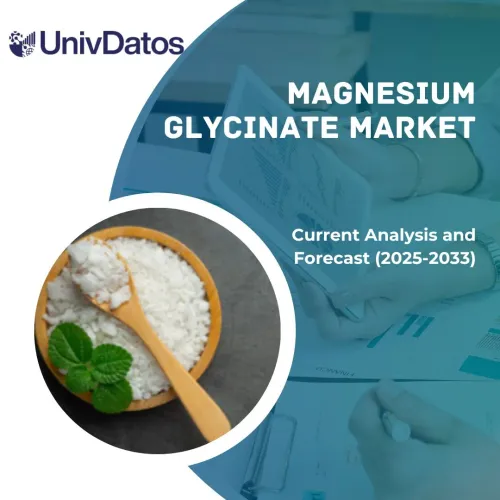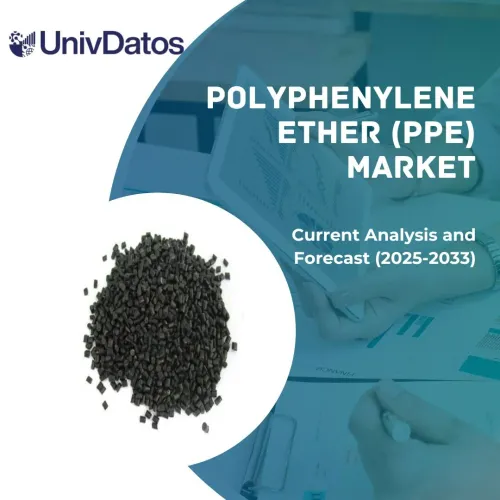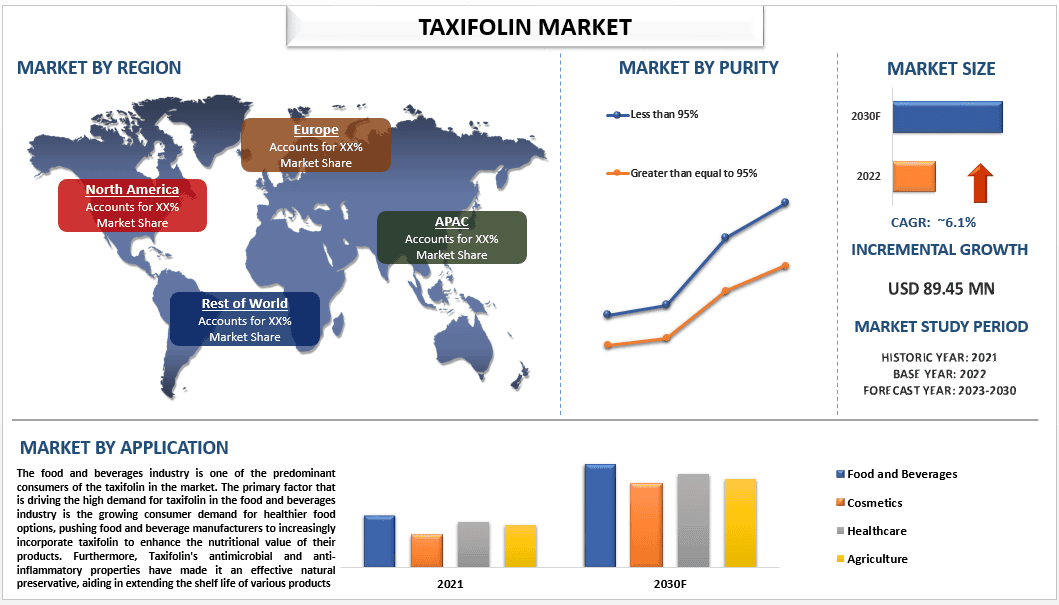
由於健康和保健產業的不斷發展,2022 年 Taxifolin 市場的價值為 8945 萬美元,預計在預測期(2023-2030 年)內將以約 6.1% 的強勁速度增長。此外,由於不健康和久坐不動的生活方式,人群中發炎性疾病的增加在市場上對 Taxifolin 不斷增長的需求中起著關鍵作用。Taxifolin 具有抗發炎作用,可抑制促發炎分子的產生並促進健康的發炎反應。例如,美國國立衛生研究院對 Taxifolin 所做的研究表明,Taxifolin 具有透過調節參與氧化應激和發炎反應的各種因子來改善 RAW264.7 細胞所受發炎損傷的能力。這表明 Taxifolin 在進一步研究治療發炎性疾病方面具有巨大的前景。這種特性使 Taxifolin 成為緩解與關節炎、氣喘和某些皮膚病等發炎性疾病相關症狀的潛在有價值成分。
市場上一些主要的營運商包括 Ametis JSC;JW Health Products Pty Ltd;Cayman Chemical;Ebrator Biochemicals;Adooq Bioscience LLC.; Creative Enzymes.; BOC Sciences; Nature Science Technologies; Alfa Chemistry; 和 United States Biological。這些業者已進行了多項併購以及合作夥伴關係,以向客戶提供高科技和創新產品/技術。
報告中提供的見解
「在純度方面,低於 95% 的部分在 2022 年佔據了顯著的市場佔有率。」
根據純度,市場分為低於 95% 和大於等於 95%。純度低於 95% 的 Taxifolin 以最大的佔有率主導市場。推動純度低於 95% 的 Taxifolin 佔據主導地位的主要因素之一是其成本效益。純度較低的 Taxifolin 形式通常生產成本較低,使其對製造商來說更實惠,並吸引了更大的客戶群。此外,Taxifolin 在各個行業都有應用,包括製藥、化妝品以及食品和飲料。對於某些應用,純度較低的 Taxifolin 足以滿足需求,而不會影響產品品質或功效。這種相容性使製造商能夠透過提供純度低於 95% 的 Taxifolin 來滿足市場需求,這足以滿足許多應用。
「在應用方面,食品和飲料產業在 2022 年佔據了顯著的市場佔有率。」
根據應用,市場分為食品和飲料、化妝品、醫療保健和農業。食品和飲料產業是市場上 Taxifolin 的主要消費者之一。推動食品和飲料產業對 Taxifolin 高需求的主要因素是消費者對更健康食品選擇的不斷增長的需求,這促使食品和飲料製造商越來越多地採用 Taxifolin 來提高其產品的營養價值。此外,Taxifolin 的抗菌和抗發炎特性使其成為一種有效的天然防腐劑,有助於延長各種產品的保質期。透過抑制引起腐敗的微生物的生長,Taxifolin 已成為確保產品新鮮度和最大限度地減少浪費的寶貴工具,這些因素在食品和飲料產業對 Taxifolin 不斷增長的需求中發揮了至關重要的作用。
Taxifolin 市場報告涵蓋範圍
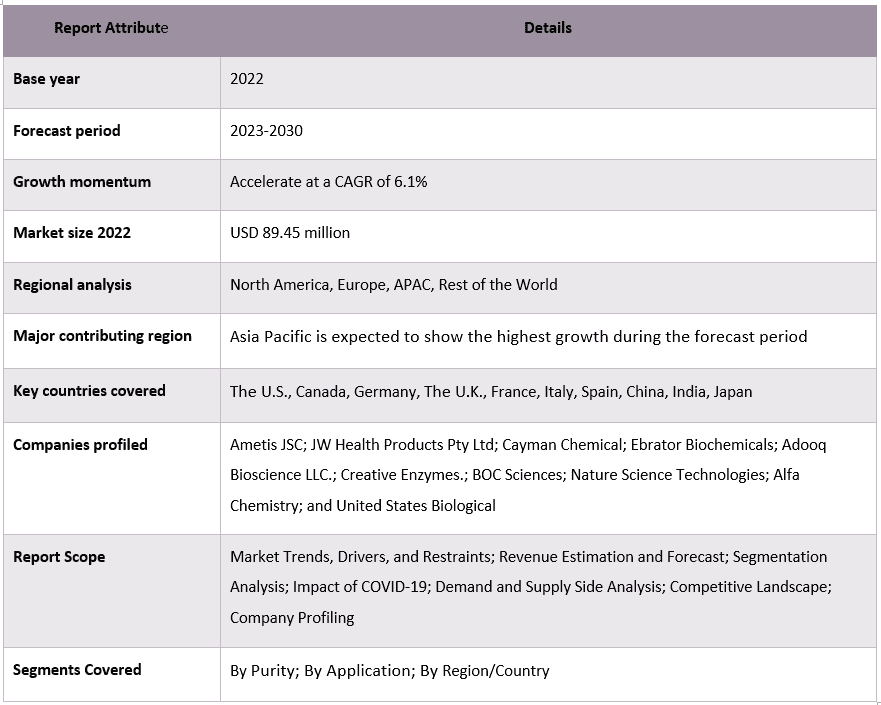
「預計亞太地區在預測年份(2023-2030 年)將見證顯著增長。」
亞太地區正在成為 Taxifolin 產品增長最快的市場之一。推動 Taxifolin 產品高增長的主要因素之一是不斷發展的營養保健品和膳食補充劑產業。Taxifolin 因其潛在的健康益處而被用作這些產品中的活性成分,從而進一步推動了需求。此外,該地區的慢性疾病(如心血管疾病、糖尿病和癌症)有所增加。Taxifolin 對這些疾病的潛在保護作用促使其在功能性食品和飲料中的使用,吸引了越來越多的消費者。此外,隨著亞洲太平洋地區許多國家可支配收入的增加,消費者有更多的購買力來投資於優質保健產品。Taxifolin 被定位為一種有益的成分,正被納入更高品質的產品中,以迎合這一趨勢。
購買本報告的理由:
- 該研究包括市場規模和預測分析,並經過經過驗證的主要行業專家的驗證。
- 該報告快速回顧了整體行業績效。
- 該報告深入分析了傑出的行業同行,主要關注關鍵業務財務、產品組合、擴張策略和最新發展。
- 詳細檢驗行業中普遍存在的驅動因素、限制、主要趨勢和機會。
- 該研究全面涵蓋了不同細分市場的市場。
- 對該行業進行深入的區域層級分析。
客製化選項:
全球 Taxifolin 市場可以根據要求或任何其他細分市場進一步客製化。除此之外,UMI 了解您可能有自己的業務需求,因此請隨時與我們聯繫以獲取完全符合您需求的報告。
目錄
紫杉葉素市場分析 (2023-2030) 的研究方法
分析歷史市場、估計當前市場以及預測全球紫杉葉素市場的未來市場,是創建和分析紫杉葉素在全球主要地區的採用情況所採取的三个主要步驟。進行了詳盡的二級研究,以收集歷史市場數據並估計當前市場規模。其次,為了驗證這些見解,考慮了許多發現和假設。此外,還與全球紫杉葉素市場價值鏈中的行業專家進行了詳盡的一級訪談。在通過一級訪談對市場數據進行假設和驗證之後,我們採用了自上而下/自下而上的方法來預測完整的市場規模。此後,採用市場細分和數據三角測量方法來估計和分析行業相關的細分市場和子細分市場的市場規模。詳細方法如下所述:
歷史市場規模分析
步驟 1:深入研究二級來源:
進行了詳細的二級研究,通過公司內部來源(如年度報告和財務報表、業績演示文稿、新聞稿等)以及外部來源(包括期刊、新聞和文章、政府出版物、競爭對手出版物、行業報告、第三方數據庫和其他可靠的出版物)獲取紫杉葉素市場的歷史市場規模。
步驟 2:市場細分:
在獲得紫杉葉素市場的歷史市場規模後,我們進行了詳細的二級分析,以收集主要地區不同細分市場和子細分市場的歷史市場見解和份額。報告中包含的主要細分市場包括純度和應用。此外,還進行了國家/地區層面的分析,以評估該地區測試模型的總體採用情況。
步驟 3:因素分析:
在獲得不同細分市場和子細分市場的歷史市場規模後,我們進行了詳細的因素分析,以估計紫杉葉素市場的當前市場規模。此外,我們使用因變量和自變量(如紫杉葉素市場的純度和應用)進行了因素分析。我們對需求和供應方面的方案進行了徹底分析,同時考慮了全球紫杉葉素市場領域的頂級合作夥伴關係、併購、業務擴張和產品發布。
當前市場規模估計與預測
當前市場規模:根據上述 3 個步驟的可操作見解,我們得出了當前市場規模、全球紫杉葉素市場中的主要參與者以及各個細分市場的市場份額。所有必需的百分比份額拆分和市場細分均使用上述二級方法確定,並通過一級訪談進行驗證。
估計與預測:對於市場估計和預測,權重被分配給不同的因素,包括驅動因素和趨勢、限制因素以及利益相關者可用的機會。在分析了這些因素後,應用了相關的預測技術,即自上而下/自下而上的方法,以得出全球主要市場中不同細分市場和子細分市場到 2030 年的市場預測。用於估計市場規模的研究方法包括:
- 該行業的市場規模,就收入(美元)以及國內主要市場對紫杉葉素市場的採用率而言
- 所有百分比份額、拆分以及細分市場和子細分市場的細分
- 全球紫杉葉素市場中按提供的產品劃分的主要參與者。此外,這些參與者為在快速增長的市場中競爭而採取的增長策略。
市場規模和份額驗證
一級研究:與主要意見領袖 (KOL) 進行了深入訪談,包括主要地區的頂級主管(CXO/VP、銷售主管、營銷主管、運營主管、區域主管、國家主管等)。然後總結一級研究結果,並進行統計分析以驗證所述假設。一級研究的輸入與二級研究結果相結合,從而將信息轉化為可操作的見解。
不同地區主要參與者的劃分
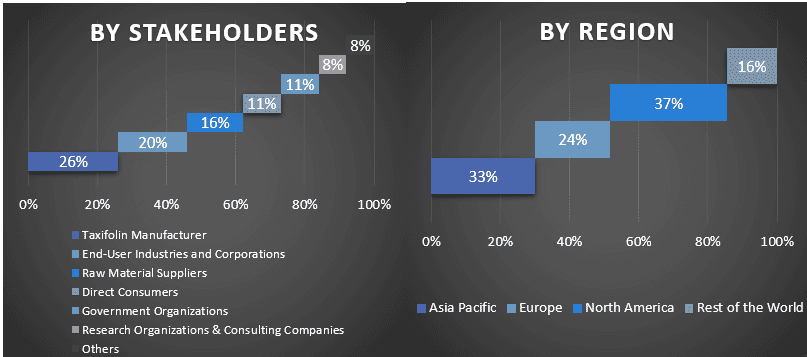
市場工程
採用數據三角測量技術來完成整體市場估計,並得出全球紫杉葉素市場每個細分市場和子細分市場的精確統計數據。在研究了全球紫杉葉素市場中純度和應用領域的各種參數和趨勢後,數據被分成幾個細分市場和子細分市場。
全球紫杉葉素市場研究的主要目標
該研究指出了全球紫杉葉素市場的當前和未來市場趨勢。投資者可以根據研究中進行的定性和定量分析獲得戰略見解,以作為其投資決策的基礎。當前和未來的市場趨勢決定了區域層面市場的整體吸引力,從而為行業參與者提供了一個利用尚未開發的市場,從而從先行者優勢中受益的平台。研究的其他定量目標包括:
- 分析紫杉葉素市場當前和預測的市場規模(以價值(美元)計算)。此外,分析不同細分市場和子細分市場當前和預測的市場規模。
- 研究中的細分市場包括純度和應用領域。
- 定義和分析紫杉葉素的監管框架
- 分析與各種中間商的存在相關的價值鏈,同時分析行業的客戶和競爭對手行為。
- 分析主要地區紫杉葉素市場當前和預測的市場規模。
- 報告中研究的地區的主要國家/地區包括亞太地區、歐洲、北美和世界其他地區
- 紫杉葉素市場的公司概況以及市場參與者為在快速增長的市場中保持競爭力而採取的增長策略。
- 深入分析該行業的區域層面
常見問題 常見問題
Q1:全球二氫槲皮素市場目前的市場規模和增長潛力是什麼?
Q2:全球二氫槲皮素市場增長的驅動因素是什麼?
Q3:依純度劃分,全球二氫槲皮素(Taxifolin)市場中哪個細分市場佔有最大的份額?
Q4:全球二氫槲皮素市場的新興技術與趨勢有哪些?
Q5:哪個地區將主導全球二氫槲皮素市場?
Q6:全球二氫槲皮素市場中的主要參與者有哪些?
相關 報告
購買此商品的客戶也購買了




